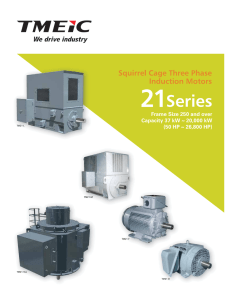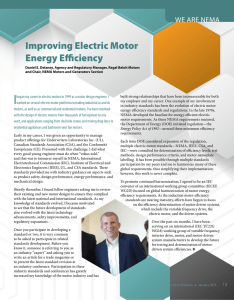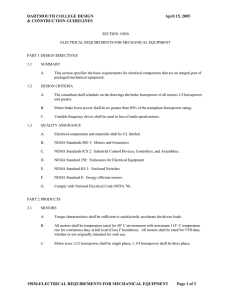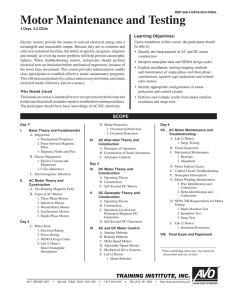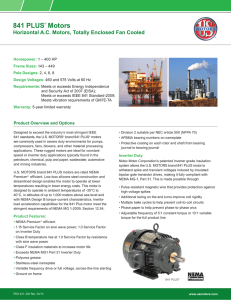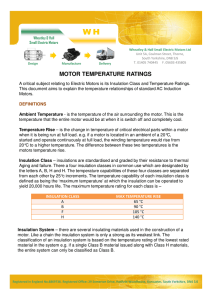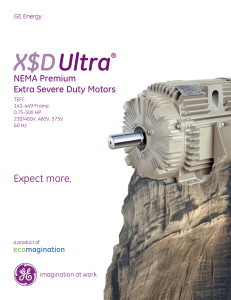Temperature Rise and Class of Insulation System
advertisement
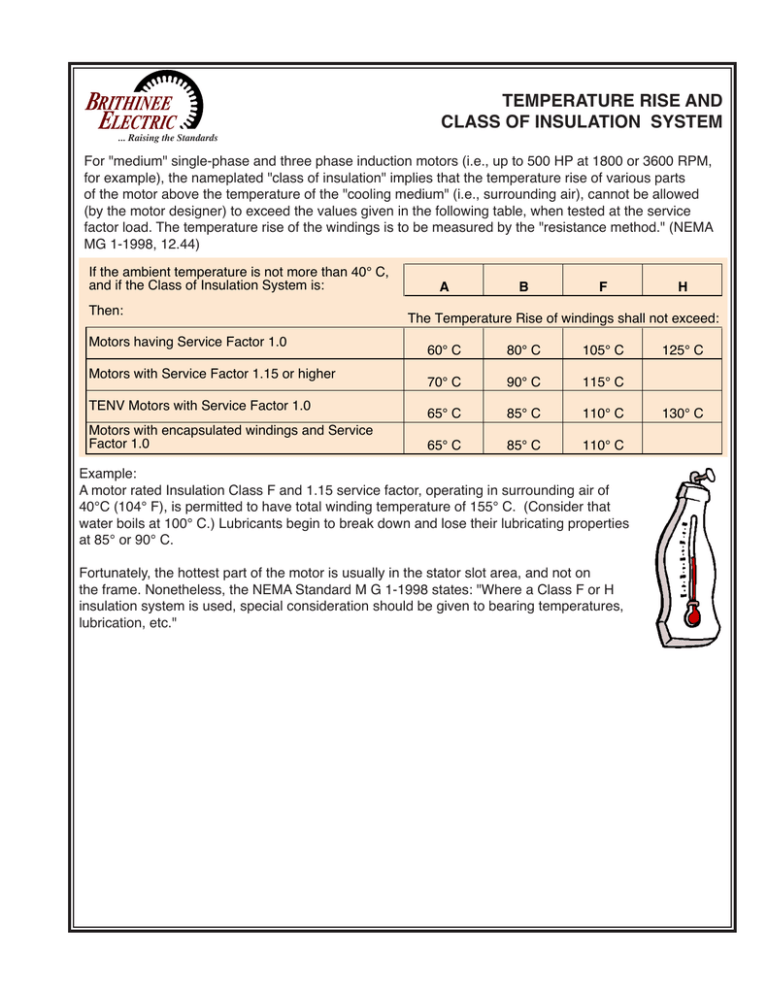
... Raising the Standards TEMPERATURE RISE AND CLASS OF INSULATION SYSTEM For "medium" single-phase and three phase induction motors (i.e., up to 500 HP at 1800 or 3600 RPM, for example), the nameplated "class of insulation" implies that the temperature rise of various parts of the motor above the temperature of the "cooling medium" (i.e., surrounding air), cannot be allowed (by the motor designer) to exceed the values given in the following table, when tested at the service factor load. The temperature rise of the windings is to be measured by the "resistance method." (NEMA MG 1-1998, 12.44) If the ambient temperature is not more than 40° C, and if the Class of Insulation System is: Then: Motors having Service Factor 1.0 Motors with Service Factor 1.15 or higher TENV Motors with Service Factor 1.0 Motors with encapsulated windings and Service Factor 1.0 A B F H The Temperature Rise of windings shall not exceed: 60° C 80° C 105° C 70° C 90° C 115° C 65° C 85° C 110° C 65° C 85° C 110° C Example: A motor rated Insulation Class F and 1.15 service factor, operating in surrounding air of 40°C (104° F), is permitted to have total winding temperature of 155° C. (Consider that water boils at 100° C.) Lubricants begin to break down and lose their lubricating properties at 85° or 90° C. Fortunately, the hottest part of the motor is usually in the stator slot area, and not on the frame. Nonetheless, the NEMA Standard M G 1-1998 states: "Where a Class F or H insulation system is used, special consideration should be given to bearing temperatures, lubrication, etc." 125° C 130° C
